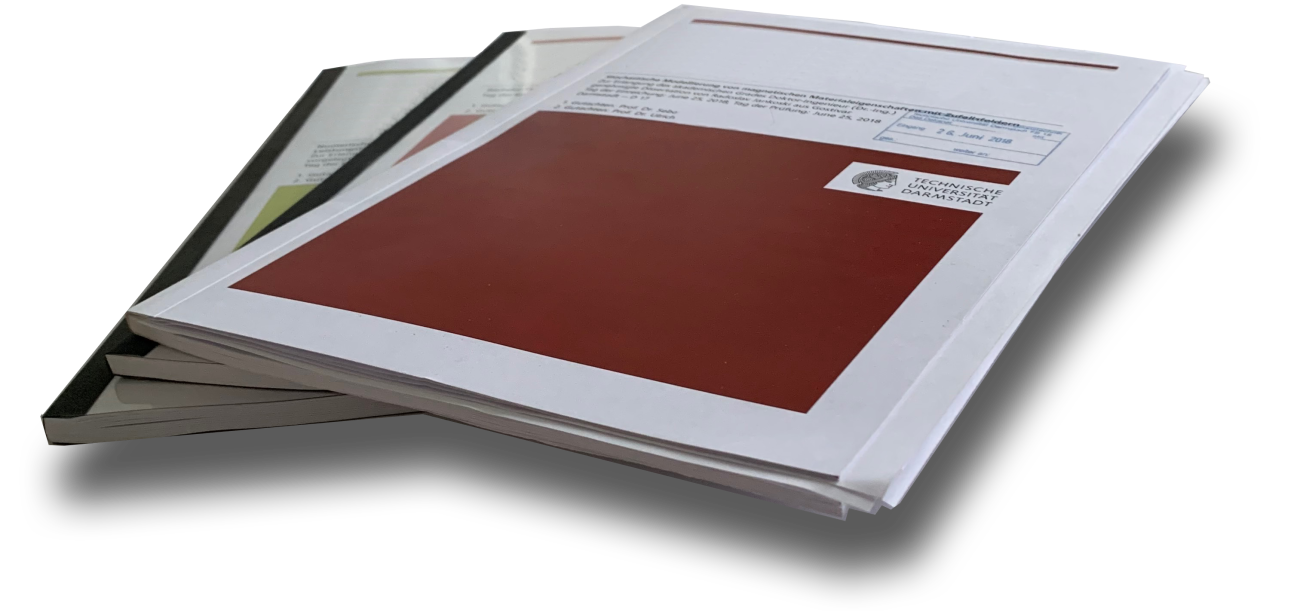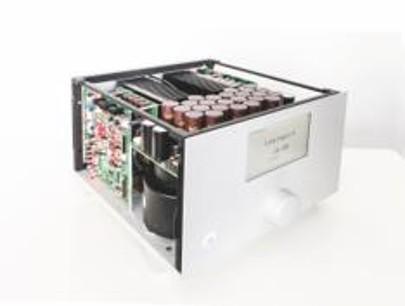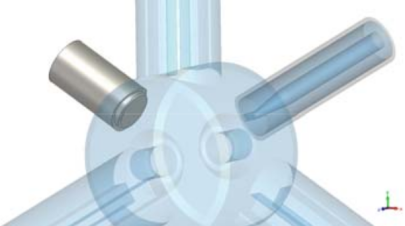Automated domain decomposition for electric machines with convergence studies
2025
Surface Impedance Boundary Conditions for a Scattered Field Formulation
2025
Finite-Element Electric-Machine Simulations Accelerated by Cheap Surrogates
2025
Numerical Simulation of a Plasmonic Niobium Photocathode for SRF Gun Applications
2025
Predicting Radiated Emissions of eBikes
2024
Modeling and Simulation of Magnetic Coupling in EMC Filters
2024
Entwicklung und Validierung eines EMV-Simulationsmodells für einen neuartigen eBike-Antrieb
2024
Convergence Study of the Updated Reduced Magnetic Vector Potential Formulation
2024
Enabling Quasi-3D Simulations in Pyrit - a finite-element solver in Python
2024
Finite-Element Electric-Machine Simulations Accelerated by Cheap Surrogates
2024
Optimization of a High Voltage Direct Current Cable Joint
2024
Optimization of a 320kV Cable Joint Specimen During Steady State Operation
2024
Simulation of HVDC Cable Joints
2024
Geometry/Topology Optimization in High End Lithography
2024
Modeling and Simulation of Foil Windings
2024
Nonlinear Eddy Current Simulations of Fast Orbit Corrector Magnets
2024
Particle-in-Cell Simulations of an Electron Gun Model using CST
2024
Development of a Multirate Method for Adjoint Sensitivity Analysis in Nonlinear Networks
2022
Modeling and Simulation of Insulation Layers in Superconducting Magnets
2021
Architecture Optimization in Physics-Informed Neural Networks
2021
In the following you will find a selection of open student theses at our chair. Further theses in the mentioned topics are possible on request. Please feel free to contact us!
Please note that there are guidelines (opens in new tab) and LaTeX templates available to help creating presentations, writing reports, Bachelor's or Master's theses.
You can find more interesting topics at:
Department of Accelerator Physics
Reduced magnetic vector potential formulation of the magnetoquasistatic Maxwell equations
2025
Master thesis, HiWi Position, Project
The reduced magnetic vector potential (RMVP) formulation has recently been used to drastically speed up the simulation of accelerator magnets at CERN. The formulation decomposes the magnetic vector potential into several components, depending on the different subdomains of the computational domain. With the currents in a coil being known, it starts by computing a source magnetic vector potential with Biot-Savart's law and proceeds with the corrections towards the total solution. In this process, the magnetostatic Maxwell equations are used.
Extending the reduced magnetic vector potential formulation to the magnetoquaistatic Maxwell equations is not straightforward. Due to the eddy currents, the current distribution in conducting domains is not known beforehand and depends on the surrounding domain. This causes errors in the total solution. It is expected that an iterative scheme that iterates between the different domains can effectively account for the eddy current effects.
Supervisors: Dr.-Ing. Jonas Bundschuh, Prof. Dr.-Ing. Herbert De Gersem
Homogenization Technique for the Thermal Simulations of Hollow Conductors
2025
Bachelor thesis, HiWi Position
Hollow conductors have been widely employed in many electrical devices such as electrical machines, transformers, induction heaters and in fast ramping magnets in order to facilitate the flow of electrical current while enabling efficient thermal cooling [Mol+24]. Simulation wise, hollow conductors are very challenging to compute as they impose a multi scale problem, both geometrically and physically. The goal of this work is to develop an efficient homogenization technique for the thermal simulation of a single hollow conductor. The resulting surrogate model shall be embedded in a so-called unit-cell method, where every hollow conductor in a device is modeled as a homogenized cell, leading to an efficient numerical method for the simulation of hollow conductor coils
Supervisors: Shamim Aslam, M.Sc., Dr.-Ing. Laura D‘Angelo
Optimizing Electric Vehicle EMC Filters with Gaussian Processes: A Master's Thesis Opportunity at Bosch
2025
Master thesis
The Challenge: Shrinking mobility electronics demand innovative EMC solutions. This thesis develops advanced techniques to optimize EMC filters, ensuring performance and safety.
The Opportunity: Join Bosch’s EMC simulation team to contribute to the transformation of the mobility sector. You will:
• Develop Expertise: Master the application of Gaussian Processes (GPs) to optimize complex engineering problems.
• Gain Practical Experience: Apply your theoretical knowledge in a real-world industrial setting, navigating industry standards and contributing to practical solutions.
• Collaborate with Experts: Work alongside experienced EMC engineers in a motivating team environment.
Supervisor: Prof. Dr.-Ing. Yvonne Späck-Leigsnering
Modeling of Sputtering Distributions on Cavities with CST Microwave Studio
2025
Bachelor thesis, Master thesis, Projectseminar, HiWi Position
The operation of bulk Nb accelerator cavities is extremely expensive due to the low-temperature helium cooling. It is expected that Nb3Sn-coated cavities and cavities with superconductor-insulator-superconductor layered coatings can be operated with higher fields and higher temperatures, leading to a decrease in power consumption. Such coatings are applied to the cavity via sputtering. However, the sputtering distribution on a complex shape, such as a TESLA cavity, is typically inhomogeneous. This leads to the question of what the influence of inhomogeneous sputtering is on the quality of the cavity. Before attempting to answer this question, we want a way to represent this sputtering distribution in a simulation software standard in the field, namely CST.
Supervisor: Aaron Gobeyn , M.Sc.
Accelerating and Automating Magnet Design and Simulation with Image Recognition
2025
Bachelor thesis, Projectseminar
Computational engineering and numerical simulations are essential in designing and analyzing accelerator magnets, especially as magnet geometries become more complex. During the early design phase, engineers often need to explore multiple magnet designs quickly for rough quality estimates. However, modeling each design in a sophisticated CAD software can be time-consuming and inefficient, as many ideas will not make it past the initial phase.
This proposal aims to accelerate the process by leveraging image recognition. You will develop a Python package that can interpret hand-drawn, 2D magnet geometries– recognizing the iron yoke shape and coil wire positions – and convert them into a format compatible with our in-house Biot-Savart-based solver [1] for magnetic field simulations.
Supervisor: Dr.-Ing. Laura D‘Angelo
Electromagnetic characterization of nanostructured plasmonic photocathodes
2025
Bachelor thesis, Master thesis, Projectseminar
This project focuses on the numerical characterization of sub-wavelength
nanostructured photocathodes, which are a promising technology for
improving photoemission quantum efficiency. By engineering the surface
of the photocathode with a periodic array of nanogrooves, the structure
can support a Surface-Plasmon-Polariton (SPP) mode. When coupled with
an excitation laser pulse, this SPP mode enhances photon absorption,
resulting in an increase in quantum efficiency (QE) and a reduction in the
power requirements for the photocathode-laser system.
This research aims to contribute to the development of more efficient
electron sources for future applications, particularly in the context of
high-duty-cycle upgrades at facilities like the European XFEL (EuXFEL).
Supervisor: Margarita Bulgacheva, M.Sc.
Multiphysical simulation of High Temperature Superconducting (HTS) coils
2025
Bachelor thesis, Master thesis
High-temperature superconductors (HTS) are essential for high-field applications like particle accelerators. Their nonlinear material properties and strong dependence on temperature and magnetic fields make simulations challenging. Accurate modeling is crucial for optimizing HTS conductor designs.
This thesis aims to implement an electromagnetic simulation of HTS conductors in COMSOL Multiphysics or CST Studio Suite using the T-A or H-ϕ formulation. The focus is on analyzing magnetic field and current distribution under realistic conditions. Depending on the scope, mechanical stress from Lorentz forces may also be investigated to assess coil stability.
Supervisor: M.Sc. Lennard Langerbein
Quantification of magnetic shielding caused by metallic beam pipes
2024
Bachelor thesis, Master thesis, Project
A multitude of devices is required to accelerate charged particles on a closed orbit of a synchrotron ring. A beam pipe separates the vacuumized particle beam trajectory from all other equipment in the tunnel and consists classically of conducting material. Bending magnets apply a strong Lorentz force on the particles which must rise proportionally to the particles’ energy. According to Lenz’ law, unwanted eddy currents are induced in the beam pipe in order to resist the change of magnetic flux density.
This work aims to quantify this disadvantageous effect of beam pipes on the field quality of bending magnets.
Supervisor: Dominik Moll , M.Sc.
Simulation of the signal influence by different line configurations
2024
Master thesis
![]()
Electrodynamic Model of a Pyrotechnical Switch for High Voltage Battery Systems
2022
Master thesis
Introduction: Soon the electromotive market will rapidly grow up. One aspect for this growth is the increase of the energy density of high voltage battery systems. This systems are built up with Li-Ion cells with a module voltage up to 850V. To increase the performance of such systems, the inner resistance of the module has to be as small as possible. As a result, the short circuit current of such High Voltage Batteries reaches up to 20kA. To interrupt such a high short circuit current within 2ms the Pyrotechnical Battery Disconnector was developed by Joyson Safety Systems Aschaffenburg GmbH.
Task: Development of an electrodynamic model of a pyrotechnical battery disconnector. Transient nonlinear electrodynamic FE simulations to improve the design of the Pyrotechnical Battery Disconnector.
Supervisor: Prof. Dr.-Ing. Herbert De Gersem
Software development and maintenance for Pyrit - a finite element solver in Python
2022
HiWi Position
Pyrit is a Finite Element Method Based numerical field simulation software written in Python to solve coupled systems of partial differential equations. Currently, the modular solver covers static and quasistatic electric and magnetic fields, stationary current problems, stationary, and transient heat conduction problems. The different modules can be coupled to analyze multiphysical engineering applications, such as e.g. foil windings, cable joints, and surge arresters. The software is under continuous development. Thus, developing further parts and maintaining existing parts of Pyrit are the main tasks.
Supervisor: Dr.-Ing. Jonas Bundschuh
![]()
Numerical Simulation of SRF Gun Coupler Kicks
2022
Bachelor thesis, Master thesis, HiWi Position
At DESY the currently available electron gun is based on a normal conductive copper cavity operated in pulsed mode. It will be replaced by a superconducting variant to enable also CW operation. The required electromagnetic field in the cavity is then excited by a dedicated input-coupler system originating from the well-known TESLA input power coupler. Additional HOM couplers are not considered in the current design phase but may be added if required. Due to the asymmetric coupling of the resonator fields to the external sources the extracted electron beam will observe a parasitic coupler kick which has to be minimized.
Supervisor: Dr.-Ing. Wolfgang Ackermann
![]()
Simulation of the electromagnetic properties of accelerator cavities
2022
Master thesis
At DESY in Hamburg the particle accelerator PETRA will be equipped with new rf resonators for the acceleration of the particles. For this reason the electromagnetic properties of these cavities have to be investigated. The 3D electric and magnetic fields can be simulated with numeric tools. And these fields need to be evaluated by post processing to calculate the accelerating and deflecting effects on the charged particle beam.
Supervisor: Dr. phil. nat. Wolfgang F.O. Müller
![]()





